| Revista Umělec 2005/1 >> May I Have This Dance? | Lista de todas las ediciones | ||||||||||||
|
|||||||||||||
May I Have This Dance?Revista Umělec 2005/101.01.2005 Martina Pachmanová | Entrevista | en cs |
|||||||||||||
|
With Milena Dopitová about art and the cycle of life
About my sister What set you on the path to becoming an artist? I was in the eighth grade at home with the flu and had nothing else to do. The first impulse struck when I came across some picture postcards depicting landscapes, and I painted them, and it made the time go by faster. Since that time I realized more and more that art is what I want to do. Most children of pre-school age attend various clubs, and they also get an art education. I went there with my sister, but we were so naughty in the classes that “art” was a completely unimportant thing for us. During the studies at art school my family was an important support for me – my father is a designer (he’s retired now) and his brother was a painter. Your twin sister didn’t become an artist, but her persona is imprinted in your work. What is it like to see your second “self” in your work and what has her experience of that been? I think she may have taken an interest in art. But she’d need more time to find the right approach; she got married and had children and returned to art in her pedagogical practice. My sister appeared in my work for the first time in 1991 in the installation Twins (Me and My Sister). This project opened the question concerning identity. Although I was interested in how much you can puzzle the viewer with the help of photographs that are the same at first sight but still present two different persons, or can also be perfectly manipulated. Then it was pleasant work for both of us. But when I recently realized the Sixty-something project where we both dress up in the role and visage of ladies in our sixties, that was a completely different experience. I think it was a very harsh experience for my sister. She kept telling me that she couldn’t look at me –it was hardly bearable for her to be confronted, in real time and space, with a picture of her own on the verge of old age. But it still was very intense for both of us, because we had to deal with something that we don’t experience everyday, or we just don’t think about. About Age? What brought you to the theme of getting old and to old age? About two years ago I went with my son Vojta for a walk in Stromovka park. It was a warm Sunday afternoon. There were retired people dancing in an open air ballroom—men were with women but there were also women with women. I learned that these older people come to dance at Stromovka every weekend. It was very emotional for me to watch the pairs dancing. Just to look at old people who manage to forget all their problems, illnesses or their deceased relatives for a while, and enjoy themselves—to be happy for a while, young again. It was very beautiful and very sad. I admire their will not to surrender to old age and yet I realize how short life is and that many are not able to live it out properly. It is strange that this subject came to me through other people and not from my parents – as if I still saw my relatives at a neutral age, in a timeless era, although they would be in good company among the dancers from Stromovka. This gave birth to the video called May I Have This Dance that I later called Sixty-something. This kind of a double feeling – optimism, because life doesn’t end with retirement, and the fear of time racing– that’s how I felt when I saw the project. But some people say that these works are really depressing. I can understand that. But I still think that old age is something positive; it is one of the few sure things in life and that we will come to it, without regard to social status or gender. That’s not meant cynically. Sixty-something is about mutuality, about looking for and finding somebody close, and not about the loneliness of old age which is one of the most depressing ideas for me. My sister and I can feel just like those dancing old people (in the end we dance in the video in the same place as all the unknown men and unknown women), but we have each other. When we went through the transformation to become old ladies, we had a professional make-up artist who could be about sixty. That was very strange: at the beginning she was about sixty, and at the end she looked like a girl in comparison to us. And when she saw the video of the afternoon dance at Stromovka, tears welled in her eyes. She may never go there, but she’ll certainly try to hold on to her charming looks. For thousands of years art, and particularly visual art, has attempted to idealize reality. That role now is in the field of advertising. In the world of ideal beauty and fresh looks, the human desire persists to find an elixir of youth. It’s a fantasy, but it influences our behavior. Nobody wants to be ugly or old and the world of consumerism caters to this. Artists don’t just offer ideals but they also offer an alternative, and often they use themselves for this purpose. Why did you decide to stick your neck out and not choose someone else for this age metamorphosis? I am not interested in old age as the opposite of a consumer ideal – although part of my latest works does involve working with that. Old age is a social problem, and I use these projects as social studies. Old age is one of the most painful situations in contemporary society—not just in our country, but abroad as well. Once you get older you become useless for society; others keep turning away to avoid looking at you. And something so trivial as an ad in the paper shows the elderly as useless – most of the personal ads are for people under 35, and the older you are (for women especially), the more difficult it is to find someone in this way. It is as if with the end of the productive age everything comes to an end. Also, that term– productive age - is pretty expressive: old people don’t “produce” anything and are thus not useful. Most people in our country can at least rely on a retirement income but in the United States they often end up on the street if they don’t have some money saved. But it is not only about money. The indifference and contempt of old age sucks the joy of life from the elderly, it takes away their self-confidence and ability to act. I also wanted to point out these things in my project – it is not a reflection so much of my own identity as it is a reflection of more general social problems. But even so my sister’s and my presence in the project is important. It’s a personal statement and I didn’t want to use anyone else for such an experiment. I also wanted to work with sisters. Sibling relationships are among the longest in life. With twins born at the same time, this relationship is even longer. I am interested in the relation of two people who come from a single egg and look nearly alike, but whose lives develop differently. This project was shown in a few places around the world. How did people react? It is interesting that they reacted differently. In New York, viewers understood it as a general expression of humanity or as a critical probe, in the US West, it seemed that the gap separating youth and age is much wider and that interventions like plastic surgery had transformed what is natural into a taboo: “We don’t want to look like that and we won’t!” LA collectors who saw the project at the Jiří Švestka Gallery, had similar reactions, but they didn’t say anything. I wouldn’t go so far as to generalize my experience and say that the East and West coast of the US are opposites. It could be that women address the wrinkles and general dilapidation of the mortal coil more than men. But from what you say it seems that you are less interested in women’s identity than the problem of getting old in general. Sure. Getting old is different for everybody and it may very well be that it is considerably more frustrating for men than for women even if the underlying reasons differ. Men seem to have greater difficulty dealing with loneliness when their partners die, because they’d been so dependent on their wives or partners that they cannot take care of themselves. I could have done a similar project with single-egg male twins, but I wanted a more personal dimension and authenticity. You said that art should point out social problems that accompany life. Do you think that art can help solve some of these problems? Art can’t change the world. Such statements have already been made here and we know how such attempts end. Whenever I attempted to address problems in society I didn’t try to persuade viewers about anything; I didn’t try to show my moral superiority; I tried to move them to contemplate the subject. To be literary is not my cup of tea. I always try to leave the viewer some space for their own logical thinking even if it was completely different from what I wanted to say. I am not afraid that someone might misunderstand my work. Any interpretation is a result of the viewer’s reaction, which is always valuable. About Death But your probes into the cycle of life don’t conclude with old age. You have already touched on a theme that is much more awkward and provocative—death. Indeed, death has appeared in your work from the beginning – let us recall Nepočítám se svou proměnou (I Don’t Count on My Transformation) from 1993. It’s an object, a tunnel covered in red wool reminiscent of a gynecologist’s chair. But I still wouldn’t say that these works are morbid. Rather, I have always felt a certain fragility and lots of empathy from them. I came to death in my work when my mother endured clinical death. That was a powerful moment for me and I worked with it in the object you speak of, and other projects later. I was interested in that special time and state of mind—neither sleep nor death. When I was in Jerusalem I was inspired by the Wailing Wall to do a photographic project the The Wishing Wall (1995). I attached last wishes, of sorts on the feet of dead bodies in the pathology ward. The photos became some kind of death wall. I inquired whether death is really the final phase or whether it is the beginning of something new, into which these hand-written wishes of the deceased can project themselves. There was also a large format photograph of two workers in the pathology department entitled Je tohle cesta, kterou hledáš? (Is This the Path You Are Looking For? 1995), a meditation on the work of people who deal with death daily. The situation itself was very strange: I knocked on the door of the department – I don’t know where I found the courage to talk to those people and see where the dead are stored before they are cremated or buried; it’s also the place to which relatives bring the clothing the dead will wear when they are put into the coffin. Four years later I photographed these clothes for the project S,M,L,XL,XXL. Taking the clothes out of bags and unpacking them was an intense experience—I was touching the last intimacy of those people. And it wasn’t just clothes. There were also shoes in the bags, and false teeth – everything one needs for the final journey to appear as though they never left. But everything was anonymous. The clothes had no names, and so I understood it as a confrontation of all of us with death but not as evidence of someone’s death. And then I found a remark on some of these bags saying “Shave” or “Put on make-up” or both. And I realized that it is a way of confusing death a bit. The dead person in the open coffin should appear alive. I recorded on the video the ritual of shaving and make-up. Maybe if my life was OK at that time, I wouldn’t be doing things like that. I don’t mean that it was therapy. But I have to say – thinking about it today – that the touch of death helped me overcome troubles in my life and enabled me to see the world in a different light. But there’s a difference between gazing at yourself as an old person and filming a dead person. Don’t you think that Shave, Make-up is a little bit over the top? Haven’t you ever been accused of voyeurism? Or lack of tact and tastelessness? I’ve heard similar comments on some of my readings and exhibitions. I have always confronted these themes and I tried not to put caricatures in it. I wanted it to be a pure statement about death that we all must cope with in the course of our lives. There is nothing funny or despicable about the shaving and make-up of death, even though it is a masking of death. The manner in which we appreciate such rituals, or not, says a lot about our respect towards human beings we held dear. Before I started recording I had long sought after someone whose facial expression would show something between sleep and death. I didn’t intend it to be a shock but rather an illustration of death as an inseparable part of life. And what’s more, who knows what comes after life? When journalists ask why such a young artist would deal with death I explain that it is more than about death: I want to say something about life—that thanks to death one can realize the value of life. About growing up At that same time, around 1999, you were interested in a totally different phase of human life: adolescence and growing up. At first glance it appeared to be an insurmountable contrast, that growing up is a happy and carefree time. The project, Hádej, jestli jsi můj přítel (Guess Whether You Are My Friend) showed something else: that it is a bittersweet and confused time, infused with questions, who am I? who do I want to be? At that time the generation of teenagers interested me as a social phenomena. For a long time I felt a part of this generation but continuously I found out that it is not so anymore, that the generation gaps are bigger than I thought and this is partly because the time of growing up as I remember it was very different from the time of growing up at the end of the 90s. This is projected in their behavior. On one hand they were growing up in a time of freedom, but on the other this openness put questions in front of them which we didn’t have to resolve at their age. I wanted to touch the sensitivity and vulnerability of a person on the verge – or in front of the verge of adult age when one is often thrown into the world without orienting themself in it – or in themself. I was teaching art education at a private grammar school at that time and I spent a lot of time with the students of this age and that was the first impulse for this project. You also touched on a problem of the search for sexual identity when you captured quite explicitely a couple of desirous adolescent boys in your photo- graphs. Why did you choose the motif of homoerotic desire? When I was going to secondary school we never spoke about such things. It was – like feminism or sexual harassment – forbidden and therefore it didn’t exist. For me it was extremely interesting to watch how homosexuality legalized itself among the youth as a natural part of life and the public still considered it as something strange and sick. This theme I treated in the form of photographic comics. I left the comic bubbles empty and the viewers at the exhibition – in the Czech Republic, Germany or somewhere else in Europe could write into them what they wanted. And because it was anonymous, people expressed themselves very openly, which pleased me. About art When you speak about the differences among generations, you yourself belong to that one which in the first half of the 90s started exhibiting not only in the Czech Republic but also abroad. In 1994 you had a solo exhibition at the Institute of Contemporary Art in Boston and in the private Ronald Feldman Gallery in New York. What did this opportunity mean for you, when a few years ago – for a slightly older generation this would have been unthinkable? In 1989 before the revolution we founded a group Pondělí (Monday) with my classmates, which I to this day understand as a trigger mechanism for my work. In Pondělí was a totally free and great atmosphere to do something else from what had been being done on the Czech scene until then, and mainly something else from what we could do in school. So when the post-November changes came, I didn’t understand it as a possibility for myself but for all of us. Your question would be more interesting for someone who was a fullfledged artist at that time and had a much better comparison than me, I only started studying around 1989. For my generation exhibiting abroad came somehow of itself and I don’t feel any bigger changes. Many of us started taking part in big international projects – the biennale in Sydney in 1992 or biennale at Aperto in Venice a year later. At that time the interest in Czech art was very big but since then the situation has changed. Even though I recently had another exhibition in Ronald Feldman’s gallery, I still think that today the contemporary art scene is tuned differently. It is surely given by the fact that we are a part of the European Union. We have the same opportunities as the artists from “Western” countries but at the same time we are still somehow on the margin. In the first half of the 90s there was a certain euphoria from the discovering of the “East”. The fact that art from this part of Europe appears at international exhibitions very little is maybe given by not only a disappearing interest of the western curator, but also because we could have grasped the chances we had some ten years ago, and we didn’t keep up with with the contacts with the world. I think that there are not many chances like that in life – and not only for an individual but also for the whole art community. Your generation is surely the first one from which so many extraordinary women–artists emerged. Kateřina Vincourová, Veronika Bromová, Markéta Othová and you – all of you were exhibiting together at one time. What did you think about this new phenomenon in Czech art? Many people ask me if I’ve realized my “female” role. It was very natural, and maybe that is why we didn’t pay it much attention. When I say natural, I mean at the beginning of the 90s, when there was a hunger for contemporary art suddenly there was no particular difference between men and women. In the previous generation there was, at least as I know it, a very different situation. I would often hear older male colleagues say things like “This must have been done by a woman!” or “A woman belongs in the kitchen,” that I never experienced in my generation. It must have been much more difficult to be assertive for women-artists of the 60s and 70s who had to face such comments. I don’t want to simplify the problem, but when our generation appeared, it began to fill an empty space that had been here for a long time. We would both agree that until a certain time, it was unthinkable for us to think or express our own “female” identity in our work. As it concerns feminist thinking, we have probably gone through some “coming out.” We have had a rebirth out of the view that had despised feminism into one now that finds it completely natural, as you say yourself, openly expressing problems connected with feminism. How did you experience this rebirth? I will try to say it simply and clearly, but I don’t know if I’ll manage. As I said, I never experienced discrimination on the part of my colleagues – at least concerning my contemporaries and the Pondělí group. On the other hand, there was a friendly and selfless atmosphere. For a long time I had no reason to think about feminism. When someone called herself a feminist, it had a pejorative connotation was taken as an extreme and harsh radicalism - a woman delimited as a fighter. And when there was a subject associated with the position of women in society and female identity appeared in my work, when they asked me abroad whether I was a feminist I always said no. I didn’t feel like I was suffering for being a woman and I refused feminism. I realized that it is not as simple as that, and there is no discrimination about whether or not I can exhibit. Nothing happens to me, but there are women who experience it every day. And then I myself went through something that persuaded me that the balance between male and female principle is an illusion of my life. When I exhibited in America for the first time I wore a skirt and a ribbon in my hair for the opening, that stirred a strange reaction among other women-artists. They needed to hide their female identity or at least not to show it off, and they never brought their children to art events and l looked like a woman. This kind of radicalism was annoying, I took it as unnatural but then I realized that without masking femininity, the art world would probably never take these women – artists seriously. On the basis of this experience I created an installation in 1994 called Neboj se udělat ten velký krok (Don’t Be Afraid to Take That Big Step) in which I used the figure of Joan of Arc – I was interested in the contrast between female beauty and gentleness and the hardness, coldness and inaccessibility of the armor in which Joan of Arc is usually depicted. I put a billiard table under her portrait symbolizing a common male entertainment that was another part of the installation, covered in blue wool (the same as women use to knit sweaters). The game of billiards seemed a pure dream. I also wanted to echo the question whether a woman who wants to free herself is appropriate. Do you feel free as a woman-artist? Yes, because through art I can best express my thoughts and do so the most freely. In the world of galleries, museums, curators and businesspeople, it is difficult to talk about total freedom.Total freedom is, however, an inaccessible goal, whatever we do. Perhaps more important than to be free for an artist is to be strong enough. In 1996 I had a scholarship to study in upstate New York, in Utica a town near the Canadian border. It was lovely landscape whose rugged contours created a unique spirit of place. My stay was in connection with the completion of a project to be subsequently exhibited. Frequent fires in older wooden homes and various institutions for the mentally disadvantaged lent the city an unsettling edge. I’d never entered a house after it had burned down—a place where everything has been fully destroyed by fire, and all that remains are ashes. I crossed into that black darkness and I wanted to find something. I came across what appeared to be a charred book, and a scrap of paper—a letter inside that the homeowner had apparently written to himself. Gary You should read this because its all about you and no one knows more on the subject than me. Read this once a day and maybe you will eventually learn something. You worry about the friendship of Steve and Ken at almost every possible minute. You should know by now that they are your friends and probably always will be. Stop worrying! They are still your friends. You haven’t done anything to lose that friendship yet so stop worrying. Don’t bother the two of them as much as you do. If they wanted you over, they would call you. Stop calling them and the friendship will last longer. Nothing makes the two of them madder than having you around more than a few hours in one day. Realize that and you can correct that fault. Stop feeling uncomfortable around Steve and Justine. You know the real reason why you are uncomfortable around the two of them and since Steve knows part of it, let it go at that. Don’t complicate matters or make things bad for Steve. Stop bothering them about the summer. If they want to see you this summer, they’ll call, if they don’t, that means they do not wish to see you. Let it rest at that. Above all, the most important thing to remember is that the two of them are your best friends and with all your faults, you need two friends. Don’t bother them. Ask Steve if it bothers him to have you around in the morning and if he says no, let it go at that. Ask Ken if you bother him when you go to his house. The same thing goes for Ken as it does for Steve when you get an answer. Remember, the best way to keep their friendship is to stay away from them. Good luck! Gary Tracy
01.01.2005
Artículos recomendados
|
|||||||||||||
|
04.02.2020 10:17
Letošní 50. ročník Art Basel přilákal celkem 93 000 návštěvníků a sběratelů z 80 zemí světa. 290 prémiových galerií představilo umělecká díla od počátku 20. století až po současnost. Hlavní sektor přehlídky, tradičně v prvním patře výstavního prostoru, představil 232 předních galerií z celého světa nabízející umění nejvyšší kvality. Veletrh ukázal vzestupný trend prodeje prostřednictvím galerií jak soukromým sbírkám, tak i institucím. Kromě hlavního veletrhu stály za návštěvu i ty přidružené: Volta, Liste a Photo Basel, k tomu doprovodné programy a výstavy v místních institucích, které kvalitou daleko přesahují hranice města tj. Kunsthalle Basel, Kunstmuseum, Tinguely muzeum nebo Fondation Beyeler.
|







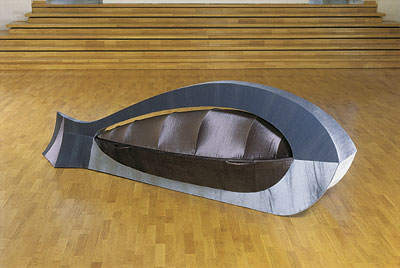
























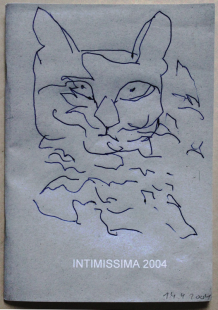




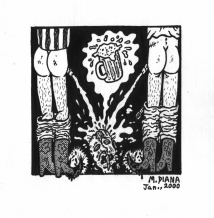
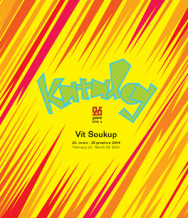
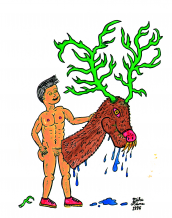
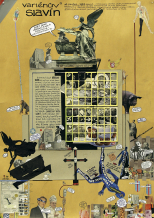


 New book by I.M.Jirous in English at our online bookshop.
New book by I.M.Jirous in English at our online bookshop.
Comentarios
Actualmente no hay comentariosAgregar nuevo comentario